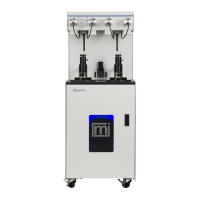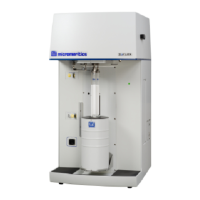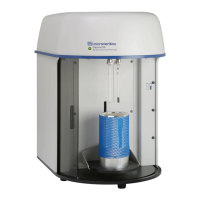SediGraph III 5120 Service 0% Concentration Determination
Mar 2010 3-1
3. ANALYSIS SEQUENCE
The SediGraph III 5120 analyzes particle sizes using the sedimentation method. In this
method, particle sizes are determined by knowing the gravity induced falling rates of particles
in liquid with known density, temperature and viscosity properties.
Before an analysis, the operator uses the SediGraph software to enter the sample density and
starting/ending diameters for a particular analysis. The operator also enters the density and vis-
cosity of the sedimentation liquid. This information can be entered in either of two ways. The
operator can enter the density and viscosity at the current analysis temperature, or the operator
can create a liquid properties table for the density and viscosity at a high, an intermediate, and
a low temperature. When a liquid properties table is used, the analysis program calculates the
density and viscosity of the sedimentation liquid at the current cell temperature by interpolat-
ing between the previously entered values.
0% Concentration Determination
Prior to the first run, a baseline value needs to
be established. Pure, clean sedimentation liquid
is used for this purpose. An analysis is started,
the cell full of the sedimentation fluid is
scanned and the maximum number of X-ray
kilo-counts is detected and recorded at 220 data
collection points. During this process, the Sedi-
Graph III 5120 passes a finely collimated X-ray
beam through the transparent windows of the
analysis cell to the photomultiplier detector as
the cell moves vertically between them. At 220
data collection points, the X-ray intensity is
recorded and a baseline value is calculated. The
baseline value is for 0% concentration because
the cell contains only the sedimentation liquid.
These baseline values remain valid as long as there are no changes in the sedimentation liquid,
the shape of the cell, or the X-ray intensity.

